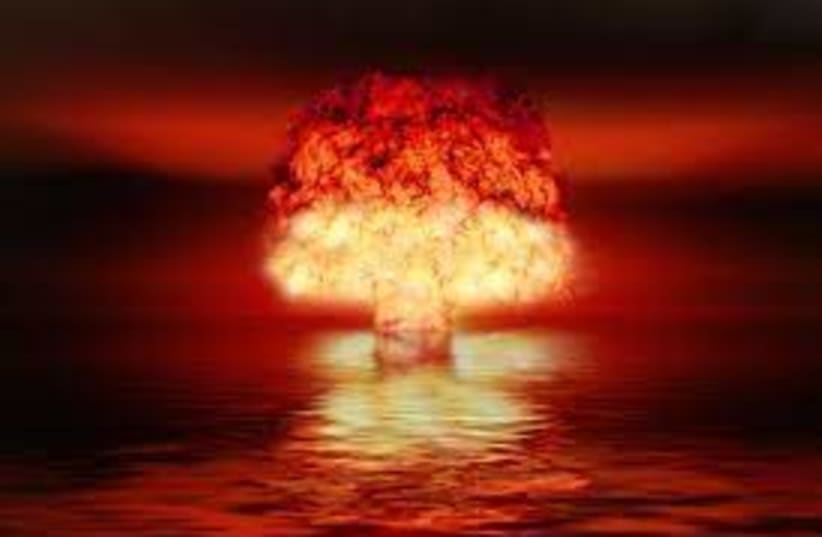As Iran edges closer to becoming a nuclear power, veteran Israeli journalist Dan Sagir’s new book Weapons of Mass Deterrence: The Secret Behind Israel’s Nuclear Power is particularly pertinent.
“The possibility that Israel could some day lose its monopoly on nuclear weapons in the Middle East sparked this book about Israeli nuclear deterrence and its many implications,” he writes. “Iran’s nuclear program and Iranian president Ahmadinejad’s 2005 call to wipe Israel off the map prompted me to investigate the enigmatic nature of Israeli nuclear deterrence and how it has influenced decision-making in the Arab states over the past half-century.”Sagir, 68, a research fellow at the Davis Institute for International Relations at the Hebrew University of Jerusalem, believes that a careful reading of how Israel’s capabilities have been integrated into the country’s general deterrence strategy “can promote effective decision-making about how to cope with the Iranian challenge and other potential nuclear states in the Middle East.”
He says that “Dimona” – the city next to which Israel built its nuclear reactor and which in the book refers to Israel’s nuclear capabilities over the past six decades – has interested him since his undergraduate years at the Hebrew University in the 1970s. His interest was piqued while working as a military correspondent for Haaretz in the 1980s, when he covered the Vanunu affair, in which a technician at Dimona leaked classified information to the foreign press about Israel’s nuclear secrets. In the early 2010s, he embarked on a journey of academic research on the topic, culminating in a doctoral dissertation at the Hebrew University, on which his book (first published in Hebrew) is based.
“The book is the first attempt of its kind to explore the nuclear dimension in the various confrontations in the inter-state conflict since May 1967, both from the point of view of Israel and from the point of view of the adversary Arab states,” he asserts. “The main challenge I faced in conducting my research was, of course, the fact that Israel has never publicly announced its nuclear capabilities or engaged in open nuclear testing.”
Israel's approach towards nuclear deterrence
Israel adopted what Sagir calls “a policy of opacity” with regard to its nuclear capabilities. “As part of concealing the capabilities developed, this also meant that official Israel never publicly addressed the perceived threats or goals that those undeclared capabilities were meant to neutralize,” he explains.
He tells the story of a meeting at the White House between Israel’s prime minister Golda Meir and US president Richard Nixon on September 26, 1969, in which secret understandings were reached. The “Golda-Nixon understandings” are perceived today as “the day on which Israel became an undeclared nuclear state,” he says.
Sagir’s thesis is that Israel effectively adopted “a unique multilayered deterrence model featuring open conventional deterrence and opaque nuclear deterrence,” but deterrence, he argues – whether nuclear or conventional – cannot be a substitute for a diplomatic policy to resolve the Israeli-Arab conflict. In recent times, he points out, peace deals have been signed between Israel and moderate Arab states, with the highlight expected to be the future signing of a US-mediated pact between Israel and Saudi Arabia.
Fifty years after the Yom Kippur War, the October 7 attack by Hamas represented “a major breakdown of Israel’s conventional deterrence and a failure of the leadership in managing Israel’s security policy in the conflict with the Palestinians,” he says.
As a historian, Sagir concludes, “All that remains for me now is to hope that the ‘earthquake’ caused by the Hamas attack on Israel in 2023 will lead the next generation of Israeli leaders to choose a different path after the war, toward resolving the longstanding conflict with the Palestinian people.”
The book is available for purchase on Amazon (ebook or print versions).

